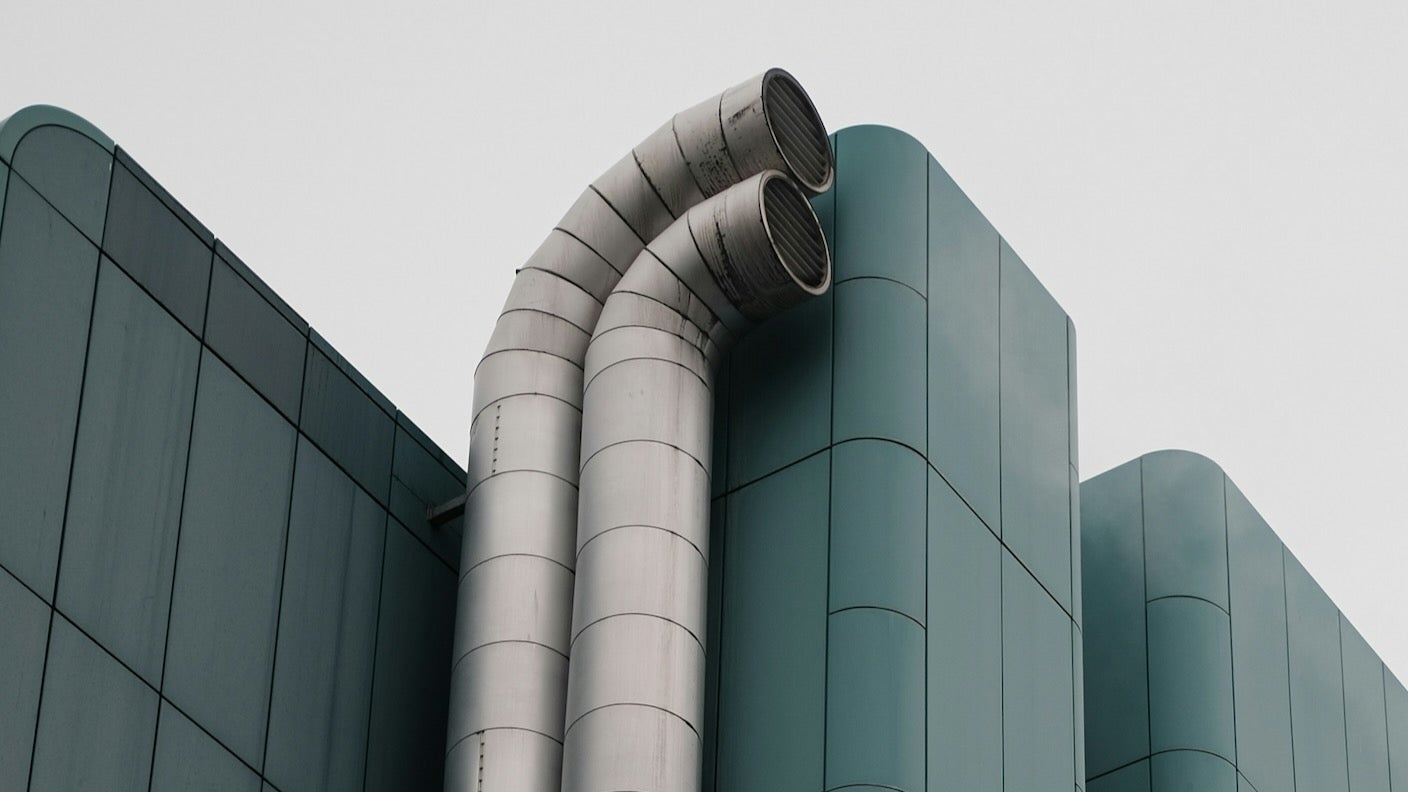A Novel Approach to Carbon Capture Aligned with Sustainable Development Goals
Addressing SDG 13: Climate Action through Distributed Air Capture
In response to rising carbon emissions, a new air filter technology has been developed to passively capture CO2 from building ventilation systems. This innovation presents a low-cost, decentralized alternative to energy-intensive Direct Air Capture (DAC) plants. The Intergovernmental Panel on Climate Change (IPCC) now acknowledges that carbon capture will play a crucial role in mitigating the adverse impacts of climate change, directly supporting the objectives of SDG 13 (Climate Action). This technology shifts the paradigm from large, centralized plants to a distributed model that leverages existing global infrastructure.
Leveraging SDG 9: Industry, Innovation, and Infrastructure
The developed solution utilizes a lightweight filter composed of carbon nanofibers coated with polyethylenimine (PEI), a polymer that binds with atmospheric CO2. The core innovation lies in its integration with existing Heating, Ventilation, and Air-Conditioning (HVAC) systems, a key component of modern infrastructure. This approach aligns with SDG 9 (Industry, Innovation, and Infrastructure) by upgrading existing infrastructure for sustainable purposes.
- Utilization of Existing Infrastructure: The technology can be deployed within billions of ventilation systems already installed in residential, commercial, and industrial buildings worldwide.
- Reduced Footprint: It avoids the significant land use and capital investment associated with conventional DAC plants.
- Minimal System Impact: The filters have a negligible effect on airflow, allowing for integration into current HVAC systems without requiring major redesigns or increased fan power.
Promoting SDG 7: Affordable and Clean Energy and SDG 12: Responsible Consumption
A significant advantage of this filter technology is its low-energy regeneration process, contributing to SDG 7 (Affordable and Clean Energy). Unlike conventional DAC systems that require substantial energy to release captured carbon, this method employs highly efficient heating techniques. This efficiency supports responsible production and consumption patterns as outlined in SDG 12.
- Solar Regeneration: The carbon nanofibers efficiently absorb sunlight, heating the filter to approximately 80 degrees Celsius to release the captured CO2.
- Electrical Regeneration: A brief electrical pulse of one to two seconds can heat the conductive fibers, resulting in an almost instantaneous release of the gas.
The system achieves a net carbon removal efficiency of approximately 92% when regenerated with solar heat, with an emission footprint of just 0.073 kilograms of carbon for each kilogram of CO2 removed. This represents a substantial improvement in energy efficiency over most current DAC technologies.
Enhancing SDG 11: Sustainable Cities and Communities
The economic viability and decentralized nature of this technology make it a promising tool for creating more sustainable cities and communities, a central goal of SDG 11. By empowering individual buildings to become sites of carbon capture, it contributes to reducing the overall urban carbon footprint.
- Cost-Effectiveness: The estimated cost is $362 per ton of CO2 removed using solar regeneration and $821 per ton with electricity. With available tax incentives and storage credits, net costs could fall to between $209 and $668 per ton.
- Scalable Impact: If widely deployed, the technology could remove an estimated 25 million tons of CO2 annually across the United States and as much as 596 million tons globally.
While challenges remain in scaling the production of the nanofiber material and establishing logistical systems for filter collection and regeneration, the approach offers a viable pathway for businesses and homeowners to contribute directly to climate mitigation efforts.
Analysis of the Article in Relation to Sustainable Development Goals
1. Which SDGs are addressed or connected to the issues highlighted in the article?
- SDG 7: Affordable and Clean Energy: The article emphasizes the low-energy nature of the new filter technology, contrasting it with “energy-hungry carbon-capture plants.” It highlights that the new system requires “far less energy” and can be regenerated using solar heat, a clean energy source.
- SDG 9: Industry, Innovation, and Infrastructure: The article focuses on a technological innovation—a new type of air filter. It proposes leveraging existing infrastructure (“billions of ventilation systems in the world”) to deploy this technology, which aligns with upgrading infrastructure for sustainability. The discussion on scaling production also relates to industrial processes.
- SDG 11: Sustainable Cities and Communities: The technology is designed for implementation in urban and residential settings (“homes, offices, and factories”). By integrating carbon capture into building ventilation systems, it directly addresses the environmental impact of urban infrastructure, contributing to more sustainable cities.
- SDG 13: Climate Action: This is the central theme of the article. The entire purpose of the described technology is to combat climate change by capturing and removing CO2 from the atmosphere. The article explicitly mentions the need to “reverse” rising carbon emissions and “avert the worst impacts of a warming climate.”
2. What specific targets under those SDGs can be identified based on the article’s content?
- Target 7.3 (Under SDG 7): “By 2030, double the global rate of improvement in energy efficiency.” The article supports this target by describing a technology that is significantly more energy-efficient than conventional direct-air-capture systems. It states the new filter requires “far less energy” and has a low carbon footprint for its operation (“just 0.073 kilograms of carbon emissions for each kilogram of CO2 removed”).
- Target 9.4 (Under SDG 9): “By 2030, upgrade infrastructure and retrofit industries to make them sustainable, with increased resource-use efficiency and greater adoption of clean and environmentally sound technologies…” The article directly addresses this by proposing a “clean” technology that can be retrofitted into existing HVAC infrastructure “without major design changes or increases in fan power,” thereby making buildings more sustainable.
- Target 11.6 (Under SDG 11): “By 2030, reduce the adverse per capita environmental impact of cities…” The proposed distributed air filter system, if widely deployed in buildings, would directly reduce the carbon footprint of cities and their inhabitants, thus lowering their adverse environmental impact.
- Target 13.2 (Under SDG 13): “Integrate climate change measures into national policies, strategies and planning.” The development and potential deployment of this technology represent a tangible climate change mitigation measure. The article notes that bodies like the IPCC “now concede carbon capture is likely to play a crucial role,” suggesting its integration into climate strategies.
3. Are there any indicators mentioned or implied in the article that can be used to measure progress towards the identified targets?
- Cost of CO2 removal: The article provides specific cost metrics, stating the system would cost “$362 per ton of CO2 removed” using solar heat and “$821 per ton with electricity.” This is a key indicator for measuring the economic viability and accessibility of the climate technology.
- Net carbon removal efficiency: The article quantifies the technology’s effectiveness with a “net carbon removal efficiency of about 92 percent.” This indicator measures how much CO2 is removed versus how much is emitted during the process.
- Energy consumption for regeneration: The energy required is indicated by the low temperature needed for regeneration (“about 80 degrees Celsius under direct sunlight”) and the minimal electricity use (“a short electrical pulse of one to two seconds”). This serves as an indicator of energy efficiency (Target 7.3).
- Potential scale of CO2 removal: The article provides estimates for the technology’s impact, suggesting it “could remove around 25 million tons of CO2 each year across the US and as much as 596 million tons globally.” This directly measures the potential contribution to climate action (SDG 13).
4. Create a table with three columns titled ‘SDGs, Targets and Indicators” to present the findings from analyzing the article. In this table, list the Sustainable Development Goals (SDGs), their corresponding targets, and the specific indicators identified in the article.
| SDGs, Targets and Indicators | Corresponding Targets | Specific Indicators from the Article |
|---|---|---|
| SDG 7: Affordable and Clean Energy | Target 7.3: Double the global rate of improvement in energy efficiency. |
|
| SDG 9: Industry, Innovation, and Infrastructure | Target 9.4: Upgrade infrastructure and retrofit industries with clean and environmentally sound technologies. |
|
| SDG 11: Sustainable Cities and Communities | Target 11.6: Reduce the adverse per capita environmental impact of cities. |
|
| SDG 13: Climate Action | Target 13.2: Integrate climate change measures into policies and strategies. |
|
Source: singularityhub.com







